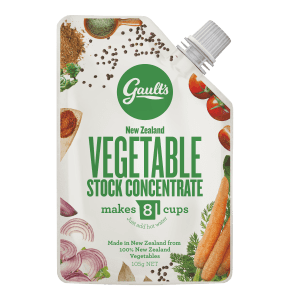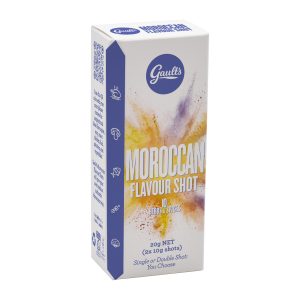As a proud Kiwi, I deeply admire our New Zealand Lamb. Its exquisite taste and quality inspire me, so I’ve crafted this blog post – to help you achieve the perfect roast lamb every time. I’ve also included some step-by-step videos of my favourite Lamb recipes.
When preparing roast lamb, various aspects, such as the cut of the meat and your preferred level of doneness, can influence the cooking time. In this blog, I will explain the specific cooking times needed to ensure you obtain those juicy, tender results we crave.
Armed with these guidelines on how long to cook roast lamb, you’ll be ready to wow your dinner guests with a beautifully cooked centerpiece dish at your next gathering. So, let’s dive in and explore the art of roasting lamb together.
Table Of Contents:
Roasting Leg of Lamb
Roast lamb is a popular dish that is perfect for special occasions or a hearty family meal. Here’s how to cook roast lamb to perfection:
- Buying lamb: When buying lamb, look for meat that is bright pink and has a firm texture. Avoid meat that is brown or grey.
- Preheat oven: Preheat your oven to 180°C (325°F) before cooking.
- Cooking method: When it comes to the cooking method, position the lamb in the roasting pan with the fat side facing upwards. This technique allows the fat to render and naturally baste the meat during the cooking process, enhancing its flavour and tenderness. For a truly indulgent, all-in-one feast, I often like to tuck in some robust vegetables – think potatoes, carrots, and the like – around the lamb. As the lamb roasts, these veggies soak up all the lamb juices and flavours, creating a beautifully complementary side that’s as much a star of the dish as the lamb itself.
- Cooking time: Cooking times may vary depending on weight and desired doneness. Use a meat thermometer to check the internal temperature of the lamb. Here are some general guidelines:
- Bone-in legs weighing approximately 2-3 kilograms: Roast for about 20 minutes per 450 grams for medium-rare or until the internal temperature reaches 63°C-65°C (145°F-150°F).
- Boneless legs weighing approximately 1.5-3 kilograms. Roast for about 25 minutes per 450 grams for medium-rare or until the internal temperature reaches 63°C-65°C (145°F-150°F).
- Lamb rests: Once the lamb is cooked, remove it from the oven and let it rest for 15-20 minutes before carving. This allows the juices to redistribute and results in a more tender and juicy roast.
Cooking Time
The cooking time for roast lamb depends on the weight of the meat and your preferred level of doneness. As a general guideline, roast lamb should be cooked for approximately 20 minutes per 450 grams for medium-rare, 25 minutes per 450 grams for medium, and 30 minutes per 450 grams for well-done.
To ensure the perfect level of doneness, use a meat thermometer to check the internal temperature of the lamb. For medium-rare, the temperature should be about 63°C; for medium, it should be around 71°C; and for well-done it should be approximately 77°C.
Remember, these are general guidelines, and actual cooking times may vary depending on the specific oven and the size and shape of the lamb cut. Always use a meat thermometer to ensure accurate results.
If you prefer a slow-cooking method, you can cook the lamb at a lower temperature for a longer period of time, and This method will yield a roast that is exceptionally tender and rich in flavour. To slow-cook lamb:
- Preheat your oven to approximately 135°C.
- As you prepare to cook your lamb, place it in a roasting pan and pour in about 1 cup of a rich, flavourful liquid – I’d recommend a high-quality stock or even wine. This step serves a dual purpose. Not only does it help keep your lamb moist throughout the roasting process, but it also infuses the meat with a deeper, more complex flavour. As your lamb roasts, be sure to check on the liquid levels from time to time and top up as necessary. This ensures a consistently moist cooking environment, leading to a beautifully succulent roast packed with flavour. It’s a simple trick, but it makes all the difference.
- Cover the pan with foil and roast the lamb for 4-5 hours or until tender and falling off the bone.
Want a Perfectly Cooked Roast Every Time?
One important factor to consider when roasting lamb, or any meat for that matter, is the concept of carry-over cooking. Let me explain. When you take your lamb out of the oven, the heat doesn’t just stop immediately. Instead, the roast continues to cook for a while due to the residual heat. This is what we call ‘carry-over cooking’.
Now, why is this important? Well, suppose you wait to pull your roast out of the oven until it hits the exact desired temperature. In that case, you’ll find that by the time it has rested and is ready to serve, it has actually cooked beyond your target due to this carry-over cooking, resulting in a roast that’s more well done than you intended.
So, I always recommend removing the lamb from the oven eight degrees before it reaches your target temperature. For example, if you’re aiming for a medium-rare finish with an internal temperature of 63°C, you’d want to remove the lamb from the oven when it hits around 55°C. Then, as it rests, it will continue to cook a little more, landing perfectly at your desired temperature.
Always remember to factor in carry-over cooking when roasting. It’s one of those chef secrets that can truly elevate your home cooking.
Resting Time
Resting a roast lamb after cooking is an essential step that often gets overlooked, yet it dramatically impacts the quality of the finished dish. Here’s why it’s important:
Juiciness: When lamb (or any meat) is cooked, the heat causes the muscle fibers to contract, pushing the juices toward the center of the roast. If you slice into the meat immediately after removing it from the oven, these juices will escape, resulting in a drier piece of meat. By allowing the roast to rest, you give the muscle fibers time to relax and reabsorb these juices, resulting in a juicier cut when you do slice into it.
Temperature: The heat from cooking continues to penetrate the meat even after it is removed from the oven, a phenomenon known as “carryover cooking”. During the resting period, the temperature of the roast can rise by several degrees, helping to ensure that it is cooked to the desired doneness throughout.
Easier Carving: Resting a roast lamb makes it firmer and easier to carve. It allows the meat fibers to reabsorb and distribute the juices throughout the roast, resulting in less juice spilling out onto the cutting board and more staying within the meat, where it contributes to flavour and tenderness.
Flavour: Allowing the lamb to rest helps the flavours to meld and intensify, yielding a more flavourful roast.
A roast lamb should rest for about 15-20 minutes before carving and serving for optimal results. This gives the juices ample time to redistribute throughout the roast, enhancing the meat’s flavor and texture. Remember to cover it loosely with foil to keep it warm during this time.
Roasted Leg of Lamb Recipe
Leg of Lamb with Garlic and Rosemary
Serves 8-12
Ingredients:
1 leg of lamb (2.5-3 kg), bone-in
8 cloves of garlic, grated
2 sprigs of rosemary, stem removed
8 tbsp (120ml) of extra virgin olive oil
1 tsp Salt and pepper, to taste
2-3 medium sweet potatoes, peeled and chopped into large chunks
2-4 medium potatoes, peeled and chopped into large chunks
2-3 medium carrots, chopped into large pieces
2 large onions, chopped into large pieces
1 small cauliflower, florets
1/2 cup of grated Parmesan cheese
1 Lemon, cut into wedges
Instructions:
Pre-heat oven 180°C (325°F)
Add the garlic, rosemary, 3 tbsp olive oil, and 3 tbsp of water to a blender and pulse until a creamy consistency. Or mix the minced garlic, chopped rosemary, and 3 tablespoons of olive oil, salt, and pepper in a small bowl. Using a sharp knife, make several small slits over the lamb and smear it with the garlic and rosemary. Place the lamb in a roasting tray. Add the chopped sweet potatoes, carrots, onion, and cauliflower florets into a large bowl. Add 3 tbsp of olive oil, season with salt and pepper, toss to combine, then add to the same roasting tray as the lamb. Depending on the size of your baking tray, you may need to lay some vegetables under the leg of the lamb—sprinkle-grated Parmesan cheese on top of the vegetables.
Cooking time: Cooking times may vary depending on weight and desired doneness. Use a meat thermometer to check the internal temperature of the lamb. Here are some general guidelines:
Bone-in legs weighing approximately 2-3 kilograms: Roast for about 20 minutes per 450 grams for medium-rare or until the internal temperature reaches 63°C-65°C (145°F-150°F).
Boneless legs weighing approximately 1.5-3 kilograms. Roast for about 25 minutes per 450 grams for medium-rare or until the internal temperature reaches 63°C-65°C (145°F-150°F).
Lamb rests: Once the lamb is cooked, remove it from the oven and let it rest for 15-20 minutes before carving. This allows the juices to redistribute and results in a more tender and juicy roast.
Let the lamb rest for 15-20 minutes before slicing and serving. Serve with wedges of lemon and drizzle with extra virgin olive oil. Enjoy
Conclusion
Well, there you have it, folks – a one-way ticket to Whangamomona, population: delicious! I hope this guide has you feeling like a lamb-roasting maestro. Remember, cooking is not just a science; it’s an art – sometimes things go awry, and that’s okay. If your lamb is a little overcooked, remember: there’s nothing a good gravy can’t fix!
As we Kiwis say, she’ll be right! And trust me, even if you slightly miss the mark, you’re still leagues ahead of Aunt Mabel’s infamous ‘charcoal surprise‘ from last Christmas. All it takes is a bit of practice and a dash of patience.
So, grab that apron, preheat that oven, and get ready to roast the most delicious leg of lamb this side of Aotearoa. And if anyone asks, tell them: “Simon Gault taught me.” Happy roasting, everyone, and remember – the secret ingredient is always a Gault’s Flavour Shot of love (and a good dash of humour)
Leg of Lamb Cooking Times by Weight
For a Medium-Rare Cook (internal temperature of 55°C – 60°C):
- 1kg – 1.5kg:
- Preheat the oven to 180°C
- Cook for 20 minutes per kg plus an extra 15 minutes
- Total time: 35 – 45 minutes
- 1.5kg – 2kg:
- Preheat the oven to 180°C
- Cook for 20 minutes per kg plus an extra 15 minutes
- Total time: 45 – 55 minutes
For a Medium Cook (internal temperature of 60°C – 65°C):
- 1kg – 1.5kg:
- Preheat the oven to 180°C
- Cook for 25 minutes per kg plus an extra 20 minutes
- Total time: 45 – 55 minutes
- 1.5kg – 2kg:
- Preheat the oven to 180°C
- Cook for 25 minutes per kg plus an extra 20 minutes
- Total time: 55 – 65 minutes
Feel free to adjust these times based on your preferences or specific instructions from the recipe you’re following. Allowing the lamb to rest for 10-15 minutes after cooking will help the juices redistribute, enhancing the flavour and tenderness.
Download this reference guide as a PDF: Leg-of-lamb-guide PDF
FAQ About How to Cook Roast Lamb
Roast lamb is celebrated for its tender texture and rich flavour. It’s a traditional dish in many cultures, often associated with celebrations and festive occasions.
The best cuts for roasting are leg, shoulder, and rack of lamb. Each offers a unique flavour and texture, suitable for different cooking styles and preferences.
Preparation involves trimming excess fat, tying the meat to hold its shape, and bringing it to room temperature before cooking.
Common seasonings include rosemary, garlic, salt, and pepper. Marinades or herb crusts can also be used for additional flavour.
Roasting can be done in a conventional oven or covered grill. Cooking temperatures vary, but a general rule is to roast at a high temperature for a short time, then lower the heat to finish cooking.
Searing the lamb before roasting or using a broiler for the last few minutes of cooking can create a desirable crust.
Use a meat thermometer to check for doneness. Medium-rare is typically around 63°c, while well-done is about 71°c. Download this reference guide as a PDF: Leg-of-lamb-guide PDF
Let the lamb rest for about 15 minutes before carving. Slice against the grain for tender cuts.
Popular choices include roasted vegetables, mint sauce, red wine gravy and Pukara Estate Caramelized Vinegar glaze.
Happy cooking, and enjoy your delicious leg of lamb!
Cheers,
Simon
















